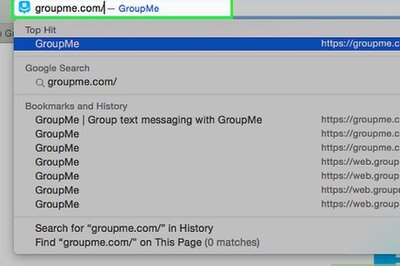
views
Accessible technology is playing a transformative role in empowering visually impaired individuals to overcome barriers and unlock their full potential. With innovative advancements in assistive devices and digital tools, individuals with visual impairments can now access information, communicate, and navigate the world more independently. From screen readers and braille displays to smartphone apps and voice-controlled devices, these technologies are enhancing accessibility, fostering inclusion, and promoting equal opportunities for the visually impaired. By harnessing the power of accessible technology, we are opening new doors and creating a more inclusive society where everyone can thrive and contribute their unique talents and abilities.
Dr Samir Sud, Co-founder & Director, Sharp Sight Eye Hospitals, says, “Accessible technology has brought about a profound change in the lives of visually impaired individuals, empowering them to overcome obstacles and participate fully in society. The advent of assistive devices and digital solutions has opened up endless opportunities, enabling them to unleash their true capabilities.”
Screen readers, braille displays, and other assistive technologies have become indispensable tools, allowing visually impaired individuals to access information, communicate, and navigate the digital world effortlessly. These innovations have enhanced their independence, facilitating their engagement in education, employment, and social interactions.
Technology for education and access to information: This refers to using technology to provide visually impaired individuals with equal opportunities for education and access to information. Dr Sandeep Buttan, Technical Lead Eye Health Asia, Sightsavers shares examples of technologies that include:
- E-booksDigital versions of books that can be accessed through screen reader software or specialized audio players. These allow visually impaired individuals to access a wide range of educational resources.
- Screen reader softwareThese software applications use synthetic speech or braille displays to read aloud the text displayed on a computer screen, enabling visually impaired individuals to access information from websites, documents, and other digital content.
- Specialized audio playersDevices like the Daisy player are designed specifically for visually impaired individuals. They support formats like Daisy (Digital Accessible Information System), which provides structured and navigable audio content, making it easier to access and navigate through books and other materials.
- Accessible IT tools like mobile phones/tabletsThese devices come with built-in accessibility features such as screen readers, magnification tools, and voice control, making them accessible and useful for visually impaired individuals.
Technology for enhancing mobility and safety: This refers to the use of technology to improve the mobility and safety of visually impaired individuals. Dr Buttan shares some more examples:
- Digital caneThis is a device equipped with sensors and haptic feedback mechanisms that can help visually impaired individuals navigate their surroundings safely. It can detect obstacles and provide tactile feedback to the user, alerting them to potential hazards.
- Smart gogglesThese goggles are equipped with artificial intelligence capabilities and various sensors. They can identify faces, read text from signs or documents, and provide audio feedback to the user. This technology enhances the independence and mobility of visually impaired individuals by providing them with real-time information about their environment.
Technology to make workplaces more accessible for people with visual impairment: This refers to the use of technology to create inclusive and accessible work environments for visually impaired individuals. Dr Buttan shares newer technology models for visually impaired:
- Screen reader softwareAs mentioned earlier, screen reader software can make digital content accessible to visually impaired individuals, allowing them to use computers and access information required for their work.
- Accessible computingThis involves adapting computer systems and software to accommodate the needs of visually impaired users. It may include modifications such as high-contrast displays, larger fonts, and keyboard shortcuts designed for accessibility.
By leveraging these technologies, visually impaired individuals can overcome barriers and access education, information, mobility, and employment opportunities more effectively. It empowers them to lead independent and fulfilling lives, enhancing their overall quality of life.
Dr Sud opines, “The integration of artificial intelligence and machine learning algorithms has further expanded the horizons of accessible technology. AI-powered systems now have the ability to recognize and describe visual content, enabling visually impaired individuals to gain a deeper understanding of their environment. This has not only improved their access to information but also enhanced their safety and mobility.”
The proliferation of smartphones and tablets with built-in accessibility features has been a game-changer. These portable devices provide visually impaired individuals with a user-friendly platform to access a wide array of applications, services, and digital content. From reading books to navigating maps, these devices have become invaluable companions, empowering individuals to lead more fulfilling lives.
“As an ophthalmologist, I am truly inspired by the positive impact of accessible technology on my patients. The ability of these innovations to bridge the gap between the visually impaired and sighted individuals is a remarkable achievement. It is crucial that we continue to support and invest in the development of accessible technology, ensuring its availability to all visually impaired individuals and fostering inclusivity in our digital society,” signs off Dr Sud.




















Comments
0 comment